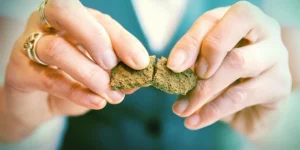
A hammertoe occurs when the middle joint of your toe bends down, resembling a hammer. Hammertoes mostly affect your second toe but can also form on your third and fourth toes. Huntsville hammertoes develop when there is an imbalance in the structures surrounding your toe joint. Inappropriate footwear, poor foot posture, long toes, genetics, and certain medications are common causes of hammertoes. Hammertoes can cause walking difficulties, toe pain and swelling, trouble straightening your toes, and a callus or corn can form on top of the middle joint of the irritated toe. There are many treatments for hammertoes, including:
1. Change of footwear
If your footwear is causing hammertoes, changing them can help treat the condition. This treatment option is suitable if the affected toe is still flexible. If too tight shoes are causing your hammertoes, purchasing shoes with a roomy toe box can resolve your problem. Avoid narrow or pointy shoes that may worsen your issue. In severe hammertoe cases, doctors may recommend orthopedic shoes to enhance comfort, cushion, support feet, and prevent further damage.
2. Toe exercises
Your podiatrist can suggest toe exercises to stretch and strengthen your toe muscles. Regular workouts can address your condition and ease your symptoms if the affected toe is still flexible. Toe exercises may involve extending then curling your toes, splaying your toes, and moving the affected toe to help avoid the contracture that leads to a hammertoe.
3. Splints
A splint is an orthotic device that you insert in your shoe to help control imbalance in the toe muscles and tendons. Splints can help ease hammertoe symptoms or prevent the affected toe from worsening.
4. Pads and cushions
Over-the-counter cushions can hold the affected toe comfortably and reduce pressure on it. Callus or corn pads can also alleviate discomfort.
5. Surgery
Surgery for hammertoes can be beneficial if non-surgical treatments are ineffective or if the joint of the affected toe is rigid and no longer moves. Your doctor may also suggest surgery if your hammertoes prevent you from doing daily duties. Surgical techniques for hammertoes are often outpatient procedures performed under local anesthesia. There are various surgical procedures for hammertoes, which include:
Tendon lengthening
Tendon lengthening is ideal if your toe joint is still flexible. The process involves your surgeon lengthening the toe tendon, causing joint imbalance.
Tendon transfer
A tendon transfer may be beneficial to some patients with flexible toe joints. The process involves your surgeon transferring tendons from the bottom of your toe to the top to help pull the joint into the correct position.
Arthrodesis
Arthrodesis, also called joint fusion, is beneficial if your toe joint is rigid. Your specialist may combine the procedure with tendon lengthening. Arthrodesis involves your surgeon removing a small part of a bone in the affected toe joint to enable it to extend fully. The surgeon then inserts an external wire or pin and an internal pin to hold the bones in place while they fuse.
A hammertoe occurs when the middle joint of your toe bends down, resembling a hammer. There are many treatments for hammertoes, including change of footwear, toe exercises, shoe pads and cushions, splints, and surgery. Schedule an appointment at Foot and Ankle Specialists for hammertoe treatment to relieve your toe pain.






